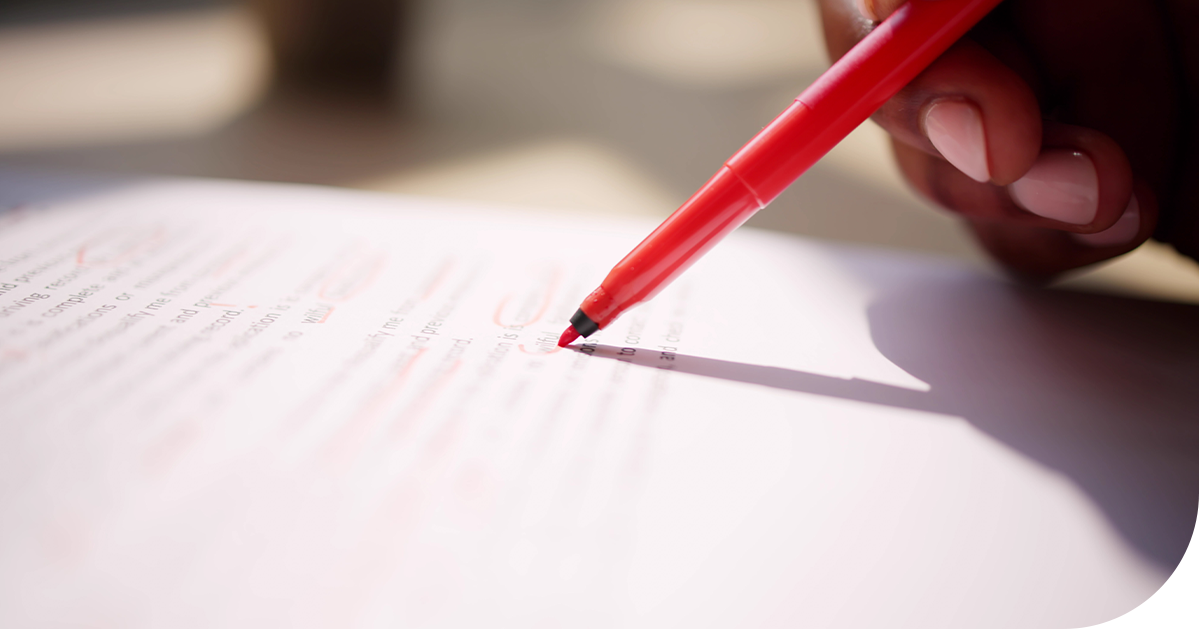Strong, clear exhibit copy helps visitors connect with your museum’s stories and collections. Even well-written text can lose its power if small mistakes slip through. Careful proofreading is the key to making sure every label and panel is accurate, engaging and easy to read.
This post shares straightforward proofreading tips designed for museum professionals. These practical strategies will help you catch errors, improve clarity and save time on revisions—so your exhibit copy can shine for every visitor.
1. Read Aloud & Solicit Feedback
Don’t just read your copy silently—read it out loud! This helps you catch awkward phrasing and errors that your eyes might skip over. If you fumble over phrasing when reading it aloud, it may trip up your visitors. Even better, have a colleague with limited knowledge of your exhibit read it to you or read it out loud to themselves. You could also post a draft in the exhibit area and ask staff or visitors for feedback. You’ll be surprised what fresh eyes (and ears) can catch.
2. Focus on Clarity & Brevity
Exhibit visitors often stand while reading, so keep your text short and to the point. Avoid long sentences and cut unnecessary words. Each label should be self-contained and clear, assuming it might be the only thing a visitor needs.
3. Check for Consistency
Consistency is key! Make sure formatting, spelling and terminology are consistent throughout your exhibit. This includes how you write dates, names and titles. Use a style guide specific to your institution or project and adhere to it consistently.
4. Verify Facts & Proper Nouns
Double-check the spelling of every name, place and technical term—every time. Verify all facts and sources. A single misspelled artist name or incorrect date can undermine your credibility.
5. Use Physical & Visual Aids
Try proofreading line-by-line with a ruler or index card to keep your place. Change the font or print a hard copy—altering the way the text looks can make errors stand out.
6. Read Backwards
It sounds odd, but reading your text backwards (either word by word or sentence by sentence) forces you to focus on each element out of context. This is a great way to catch typos and missing words.
7. Watch For Common Grammar Pitfalls
Be on the lookout for sentence fragments, run-on sentences and comma splices. Ensure each sentence is complete and clear; also, review lists and headings for parallel structure and clarity.
8. Take Breaks and Proofread Again
Once you've finished your draft, step away for a while. When you come back with fresh eyes, you're more likely to spot mistakes. If you make big changes, proofread again—new errors can sneak in!
9. Use a Checklist
A proofreading checklist helps ensure you don't miss anything. Include checks for spelling, grammar, punctuation, consistency, formatting and factual accuracy. Download our helpful multi-round proofreading checklist.
10. Assign Proofreading Roles
Review your copy in stages, focusing on one element at a time. Assign specific tasks to each reviewer—for example, ask a subject expert to check content and accuracy, and someone else to proofread for spelling and grammar. Clearly communicate each reviewer’s focus to avoid unnecessary edits.
Download our Proofreading Checklist!
This resource guides you through the rounds of proofreading, who should review at each stage and what they should look for, in a convenient checklist format.



